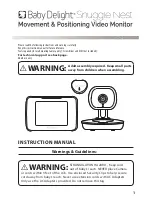
Q:
Why is there no flicker on an LCD Monitor?
A:
Technically speaking, LCDs do flicker, but the cause of the phenomenon is different from that of
CRT monitor -- and has no impact of ease of viewing. Flickering in a LCD monitor refers to usually
undetectable luminance caused by the difference between positive and negative voltage. On the
other hand, CRT flickering that can irritate the human eye comes when the on/off action of the
florescent object becomes visible. Since the reaction speed of liquid crystal in a LCD panel is much
slower, this troublesome form of flickering is not present in LCD display.
Q:
Why is an LCD monitor virtually free of Electro Magnetic Interference?
A:
Unlike a CRT, an LCD monitor does not have key parts that generate Electro Magnetic
Interference, especially magnetic fields. Also, since LCD display utilizes relatively low power, its
power supply is extremely quiet.
RETURN TO TOP OF THE PAGE
Ergonomics, Ecology, and Safety Standards
Q:
What is CE mark?
A:
The CE (Conformité Européenne) marking is required to be displayed on the regulated product
placed for sale on the European market. This mark "CE" means that a product complies with an
applicable European Directive. A European Directive is a European "Law" which relates to health,
safety, environment and consumer Protection, much the same as the U.S. National Electrical Code
and UL Standards.
Q:
Does the LCD monitor conform to general safety standards?
A:
Yes. Philips LCD monitors conform to the guidelines of MPR-II and TCO 95-99 standards for the
control of radiation, electromagnetic waves, energy reduction, electrical safety in the work
environment, and recyclability. The specification page provides detailed safety standards data.
More information is provided in the
Regulatory Information
chapter.
Q:
Is the Philips LCD Monitor Y2k compliant?
A:
Yes, all Philips LCD Monitors are compliant with the Y2K.
FAQs (Frequently Asked Questions)
file:///E|/Potomac/english/150b/safety/saf_faq.htm (8 of 9) [4/19/2000 4:41:48 PM]
















































